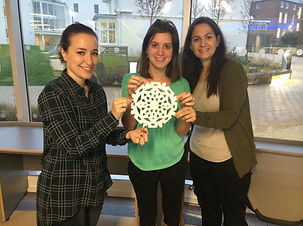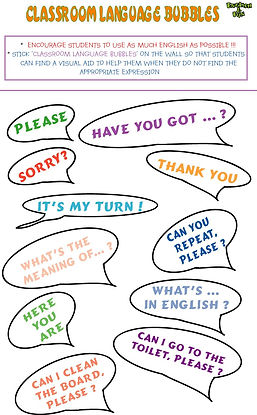Elena Perea Úbeda-Portugués
Content teaching
CLIL stands for Content and Language Integrated Learning. It refers to teaching subjects such as science, history and geography to students through a foreign language. This can be by the English teacher using cross-curricular content or the subject teacher using English as the language of instruction. Both methods result in the simultaneous learning of content and English.

CLIL teachers must not only think about the content of their lessons but also about
-
The language of their subjects in the target language (jargon),
-
The language skills for their student's level.
-
The language of instructions and classroom language.
Every teacher faces a different challenge in the CLIL classroom whether is to improve their learner's level of language, to manage he classroom in the target language or to find and select content for the subject.
From corpus to classroom
This book summarises and makes accessible recent work in corpus research, focusing particularly on spoken data.
In the National STEM Centre website you can find multiple resources including vocabulary for different areas and stages. I have linked some of them down below but first you will need to register in the main website.
-
Scientific Vocabulary for Key Stage One From National STEM Centre
-
Scientific Vocabulary for Lower Key Stage Two From National STEM Centre
-
Scientific Vocabulary for Upper Key Stage Two From National STEM Centre
Here you have some vocabulary for the art classroom and a glossary from MOMA Learning
Language of subjects
The Common European Framework of Reference for Languages: Learning, Teaching, Assessment, abbreviated as CEFR or CEF, is a guideline used to describe achievements of learners of foreign languages across Europe and, increasingly, in other countries. It was put together by the Council of Europe as the main part of the project "Language Learning for European Citizenship" between 1989 and 1996. Its main aim is to provide a method of learning, teaching and assessing which applies to all languages in Europe. In November 2001 a European Union Council Resolution recommended using the CEFR to set up systems of validation of language ability. The six reference levels are becoming widely accepted as the European standard for grading an individual's language proficiency.
Language skills
Language of instructions and classroom language
Input is the language to which students are exposed: teacher talk, listening activities, reading passages, and the language heard and read outside of class. Input gives learners the material they need to develop their ability to use the language on their own.
Language input has two forms.
-
Finely tuned input
-
Is matched to learners’ current comprehension level and connected to what they already know
-
Focuses on conscious learning of a specific point: the pronunciation of a word, the contrast in the uses of two verb tenses, new vocabulary, useful social formulas
-
Is controlled by the instructor or textbook author
-
Is used in the presentation stage of a lesson
-
-
Roughly tuned input
-
Is more complex than learners’ current proficiency and stretches the boundaries of their current knowledge
-
Focuses on authentic use of language in listening or reading passages
-
Is used “as is,” with minimal alteration by the instructor or textbook author
-
Is used in the activity stage of the lesson
-
It is important to distinguish between the two and be aware of providing students with both forms. In order to learn a language students need as much as possible to hear and read the language as native speakers use it. A way to do this is teacher's talk. Always try to use the language as naturally as possible when you are talking to students. Slowing down may seem to make the message more comprehensible, but it also distorts the subtle shifts in pronunciation that occur in naturally paced speech.
-
Speak at a normal rate.
-
Use vocabulary and sentence structures with which students are familiar with.
-
State the same idea in different ways to aid comprehension.
When instructions become more difficult the answer is not to dumb down te languae but to support it. You can do this with images and clear instructions like in this activity we designed. You can also fin some language about instructions here.
How to make a snowflake

Sometimes as teachers we tend to use the same classroom language over and over again even when our students have a higher level of proficiency. We are then wasting opportnities for them to improve their level. We do this because we fear that students might not understand us outside of this set routines but the truth is that again a simple gesture or clarification can help them gain a wider range of vocabulary. Here you have some classroom language that you might find useful to switc things up in your lesson. Click on the image below to download it.
Another useful tool for clarifying instructions are IQ's. ICQ stands for “Instruction Check Questions”. You have all the information you need down here.


